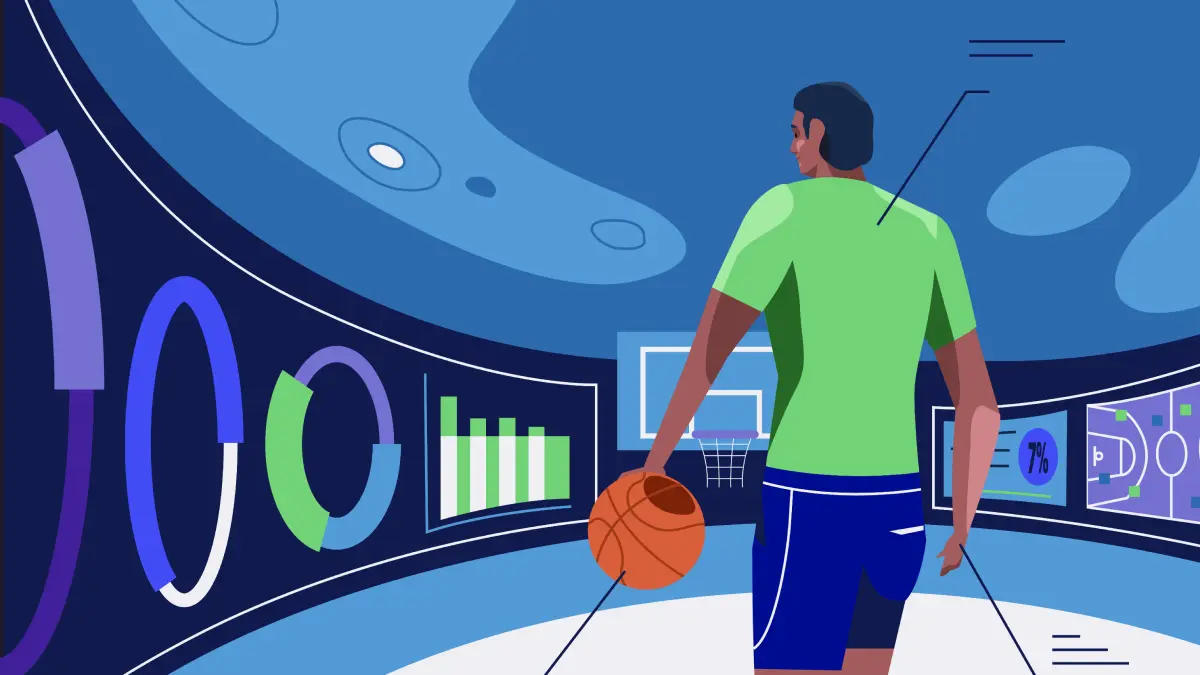How often do you check the weather forecast?
If I had to guess, you probably check it daily. Maybe multiple times a day.
Before you go outside. Do I need an umbrella?
As you get dressed for a workout. Is it shorts weather?
While you’re packing for a trip. Ahh, yes, warm and sunny all week – perfect for the beach!
Forecasting the weather helps you make decisions and plan for the future. You rely on the forecast to make plans or best prepare for a day’s activities.
But, are you checking the sales forecast for your sports facility?
Sales forecasting plays a pivotal role in financial planning for a sports facility, providing a clear estimate of future revenue and anticipated expenses.
Forecasting helps you efficiently allocate your resources, staff, and equipment to meet client demand without overspending. And, it helps you make strategic decisions. To help combat seasonality, you can use this information to identify peak seasons and low demand periods, and identify opportunities for marketing, pricing, and promotion adjustments.
So, what exactly is sales forecasting, and how can you get started for your business? In this article, we’ll dive into these answers.
What is sales forecasting?
Sales forecasting is the process of estimating future sales performance based on historical data, market analysis, and other influencing factors. For sports facility owners, sales forecasting can help you make informed decisions, allocate resources efficiently, and proactively adapt to changing market conditions.
Sales forecasting can not only help from a numbers standpoint but also when it comes to resource allocation, staffing optimization, and marketing strategies in alignment with anticipated trends. Additionally, it can help you make better, more informed decisions as you navigate potential opportunities for growth, expansion, or investments.
How to Forecast Sales for your Sports Facility
Step 1: Understand your market (and clients)
The first step when forecasting sales at your sports facility is to gain a strong understanding of your market. It’s likely you already have a good sense of the types of programs you offer, how you are different from your competitors, and what kinds of athletes you serve. But, market research is paramount to forecasting your sales, as it sets the tone for the rest of your strategy. Without a comprehensive understanding of the market, you lack the context you need to make informed decisions that lead to growth.
Start by conducting a thorough analysis of the demographic factors in your area. Identify the age groups, economic backgrounds, and sport preferences of your potential (and current) clientele. And, take a look at your competitors through conducting a competitive analysis. This will help you identify your unique selling proposition, thus helping you capitalize on your strengths. This understanding will equip you with the information you need to strategically position your facility in the market, tailor your services to meet the demands and needs of your clients, and ultimately help you accurately forecast your sales.
Step 2: Analyze historical data
Analyzing historical data stands as another critical and foundational step in the sales forecasting process for sports facilities. In order to get to where you want to be, you must understand where your business is in the present. By diving into this information – for example revenue, program utilization, and customer retention rates – you’re able to uncover patterns, trends, strengths, and challenges. This context provides the essential baseline for making informed predictions and strategic decisions that affect your future.
Using a sports management software like Upper Hand makes it easy for you to view your past finances at a glance. Upper Hand AI, empowers you to maximize your sports facility business potential with data-driven insights through advanced reporting and visualizations.
Step 3: Explore seasonal trends and patterns
The next step when forecasting sales at your sports facility is to explore seasonal trends and patterns within your sports business. Inherently, there is seasonality in sports, and demand for your programs likely fluctuates based on external factors like school breaks, holidays, or in- vs off-season training seasons.
Recognizing and understanding these seasonal patterns is crucial when forecasting your sales, as you can proactively prepare for peak periods and optimize resource allocation during slower times. Additionally, you can gain a greater understanding of when your programs are most in demand. This empowers you to strategically plan marketing campaigns, promotions, and staffing needs to capitalize on these time periods. Conversely, you can identify your “slower” seasons, thus providing an opportunity to implement targeted initiatives like special promotions or events to stimulate demand.
Ultimately, identifying seasonal patterns enables sports facility owners to manage their resources efficiently. Knowing when to expect a surge or decline in demand can help you better manage your inventory, staffing, and overall operational planning. You’ll not only ensure that your sports facility can meet the needs of your clientele, but also contribute to a more stable business model that can navigate the ebb and flow of seasonal demand.
Step 4: Create a marketing and promotional calendar
The next step when forecasting your sales involves creating (and analyzing) your marketing and promotional calendar. Once you’ve established a solid understanding of your historical data and identified any seasonal patterns, it’s crucial to align your forecasting efforts with your planned marketing initiatives.
For example, if you are planning a summer break camp, you can forecast an uptick in registrations during this targeted period. Similarly, if you are offering a new client promotion for the new year, you may also anticipate an increase in membership sales during that time.
As you continue to fine-tune your sales forecasts, you can make them more accurate and actionable. Like mentioned in Step 2, you can update your marketing/ promotional calendar to stimulate new interest during lulls, or capitalize on times of high demand. Additionally, alignment between your operational and marketing initiatives makes for a holistic approach to business planning and growth for your sports facility.
Step 5: Gather and leverage customer feedback and surveys
Ultimately, while it’s crucial to use the numbers and data surrounding your business to make decisions, it is also important to engage with your client base to balance the quantitative data with qualitative data. The best way to do this – engaging with your customers and prospects.
Collecting feedback from your clients and prospects contributes to a more customer-centric approach to sales forecasting. This ensures that your predictions align with the evolving needs and expectations of your target market. A good way to start is through marketing surveys or collecting reviews. Ask clients about their experiences, intentions, the effectiveness of your programs, or areas for improvement. Understanding the factors that contribute to customer satisfaction or purchasing decisions can help you plan to meet these needs, thus helping you forecast sales for your business.
Ready to get started?
By following this 6-step process, you’ll be well-equipped to start forecasting sales at your sports facility. Whether you have a robust sports facility management software to store your data, or you’re just getting started with data collection, the hardest part is just getting started. Sales forecasting has a number of benefits for sports facilities – it can help you adjust your programming, help you navigate seasonality, and ultimately set you up for success both now and in the future.
If you don’t yet have a sports management software, Upper Hand can help! Get a demo of Upper Hand AI today, and see how you can start making better decisions backed by data.


